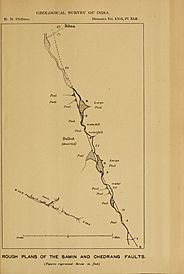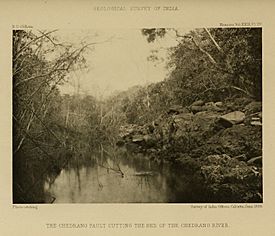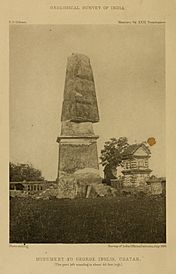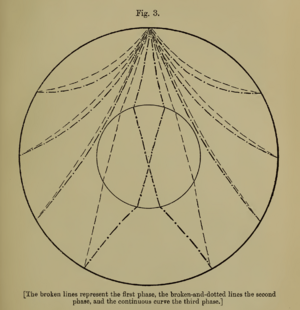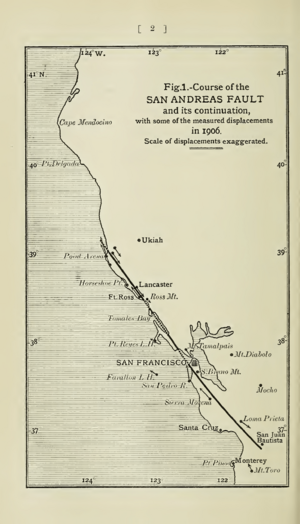Richard Dixon Oldham facts for kids
Quick facts for kids
Richard Dixon Oldham
|
|
|---|---|
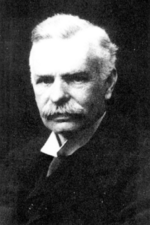
Richard Dixon Oldham
|
|
| Born | 31 July 1858 |
| Died | 15 July 1936 (age 77) |
| Nationality | British |
| Known for | measuring Earth's core; separate arrival of seismic phases |
| Scientific career | |
| Fields | Geology |
Richard Dixon Oldham (born July 31, 1858 – died July 15, 1936) was a British geologist. He was the first person to clearly identify different types of seismic waves on earthquake recordings. He also provided the first strong evidence that our Earth has a central core.
Contents
Discovering Earth's Secrets
Richard Dixon Oldham was born in Dublin on July 31, 1858. His father, Thomas Oldham, was also a famous geologist. Richard went to Rugby School and the Royal School of Mines for his education.
Working in India
In 1879, Oldham started working for the Geological Survey of India. He spent time in the Himalayas, studying the Earth's features. He wrote many reports on topics like hot springs and the structure of mountains.
His most important work was in seismology, the study of earthquakes. He wrote a detailed report about the huge 1897 Assam earthquake. This report was much more advanced than any before it.
The Great Assam Earthquake
Oldham described the Chedrang fault, a crack in the Earth where the ground moved up to 35 feet. He also reported that the ground shook so hard it lifted objects into the air. People even saw waves moving across the ground and water shooting up from the earth.
After the earthquake, scientists re-measured the land. They found that the ground had moved up to 12 feet in some places. This showed how powerful the earthquake was.
Uncovering Seismic Waves
Oldham's biggest contribution was identifying different types of earthquake waves. He studied seismograms, which are recordings of ground motion. He noticed three distinct groups of waves arriving at different times.
The first waves to arrive were the P-waves, or Primary waves. These are like sound waves, pushing and pulling the ground. He called them "condensational" waves.
Next came the S-waves, or Secondary waves. These waves move the ground from side to side. He called them "distortional" waves.
The third group of waves were much larger. These were surface waves, which travel along the Earth's surface. Oldham's observations showed that the first two types of waves traveled through the Earth's interior. This proved that the Earth behaves like an elastic material during earthquakes.
Discovering Earth's Core
In later studies, Oldham compared earthquake data from many different locations. He noticed something strange about the S-waves. They seemed to disappear or change direction at a certain distance from the earthquake. This suggested that the Earth has a dense, central core.
He estimated that this core was about 0.4 times the diameter of the entire Earth. While others had guessed about a core, Oldham provided the first direct proof of its existence and size.
Later Life and Recognition
In 1903, Oldham left the Geological Survey of India due to poor health. He moved back to the United Kingdom. He continued to study earthquakes, writing about events in Guatemala and California.
His important work was recognized with several awards. In 1908, he received the Lyell Medal. In 1911, he became a Fellow of the Royal Society. From 1920 to 1922, he was the President of the Geological Society of London. Richard Dixon Oldham passed away on July 15, 1936.
See also
 In Spanish: Richard Dixon Oldham para niños
In Spanish: Richard Dixon Oldham para niños
- Harold Jeffreys – a scientist who showed that Earth's outer core is liquid.
- Inge Lehmann – a scientist who showed that Earth's inner core is solid.
- List of geophysicists


